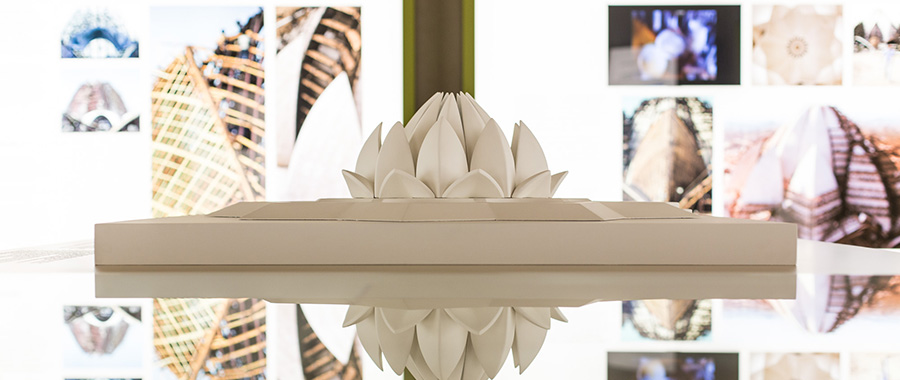Baha’i architecture is an embodiment of the underlying principles of the Baha’i Faith, a religion founded in the 19th century that espouses unity, inclusiveness, and the spiritual equality of all individuals. The fascination with Baha’i architecture can often be traced back to its distinctive aesthetic qualities and its profound philosophical underpinnings. The Italian Museum featuring Baha’i architecture serves as an apt case study to explore how structural forms and spatial arrangements are materially interwoven with spiritual ideals.
At first glance, the architectural features of this Italian Museum may appear to be a pastiche of various styles; however, closer examination reveals the intentionality behind each design choice. The flowing lines, harmonious proportions, and open spaces resonate with the Baha’i principle of unity. These elements collectively create an environment that invites contemplation and encourages personal reflection, echoing the Baha’i tenet that spiritual development is paramount. The architecture thus functions as an engaging facilitator of spiritual experience.
Moreover, the very layout of the museum is emblematic of a deeper cosmological understanding that is intrinsic to Baha’i teachings. The circular motifs that are prevalent throughout the museum suggest the concept of eternity and the interconnectedness of all things. This design choice reflects a core Baha’i belief that the material world is a mere reflection of the spiritual realm. By utilising circular forms, the architects deftly symbolize the infinite nature of the divine, transcending the limitations of linear thinking that often pervades conventional architectural designs.
Another intriguing aspect of the museum’s architecture is its incorporation of natural elements. Large glass windows provide ample natural light, symbolizing knowledge and enlightenment. This interplay between the natural and constructed environments underscores the Baha’i emphasis on nature as a manifestation of the divine. It suggests that humanity’s relationship with the natural world is intrinsically linked to spiritual growth. The museum thus becomes not only a place for artistic expression but also a conduit for deeper ecological awareness, which is another salient facet of Baha’i teachings.
This integration of nature and architecture also raises questions about sustainability—a pressing issue in contemporary society. Baha’i teachings advocate for the responsible stewardship of the earth, and the design of the Italian Museum encapsulates this ethos through its sustainable features. The use of local materials and energy-efficient systems exemplifies an architectural response that is both aesthetically pleasing and ecologically mindful. In essence, the museum stands as a testament to how Baha’i principles can inform contemporary architectural practice, challenging the common notion that spirituality and sustainability are disparate domains.
The museum also features art installations and exhibitions that delve into the narratives of Baha’i history and philosophy. These educational components serve not only to inform visitors about the Baha’i Faith but also to inspire a sense of curiosity and wonder. They embody the Baha’i commitment to education as a fundamental means of personal and collective advancement. The aesthetic experience thus mirrors the learning voyage that Baha’is undertake, cultivating a space wherein art and spirituality coalesce. This interrelationship highlights a profound observation—the recognition that art can serve as a vehicle for spiritual truths and communal dialogue.
However, what remains perhaps the most captivating aspect of the Italian Museum is how its architectural elements resonate with the universal themes of the Baha’i teachings. The pillars of justice, equality, and compassion are materialized in the very fabric of the space. Each room, corridor, and even the spatial connections between them signify the importance of community and belonging. This underscores another core Baha’i principle: that spiritual progress is best achieved in a community setting, where individuals can support one another in their respective journeys.
Moreover, the museum enacts a dialogue between the past and the future. By revitalizing traditional architectural motifs and infusing them with contemporary sensibilities, the space serves as a bridge connecting historical Baha’i legacies with contemporary aspirations. This duality speaks to the Baha’i belief in progressive revelation—that spiritual truths evolve over time and are not static. Additionally, the museum’s architecture invites future interpretations and adaptations, allowing for an ongoing conversation about the role of architecture in spiritual and communal life.
This transhistorical aspect of the museum aligns seamlessly with the Baha’i principle that every individual has a part to play in the unfolding narrative of humanity’s evolution. As visitors navigate through its spaces, they are invited to consider their own significance within that larger narrative. The museum thus activates a profound reflection on the interplay between individual agency and communal responsibility, reinforcing the idea that one’s spiritual journey is inextricably linked to the well-being of the broader society.
In conclusion, the Italian Museum featuring Baha’i architecture is more than simply a physical structure; it represents a microcosm of Baha’i beliefs and an embodiment of profound philosophical principles. Its distinctive architectural features, integration with nature, educational objectives, and dialogue between history and modernity function synergistically to illuminate the Baha’i ethos. Therefore, the fascination with this architectural form transcends aesthetic appeal, inviting deeper contemplation on the interrelationship between structure and spirit. Through such explorations, individuals may find pathways to not only understand the Baha’i Faith but to experience its transformative potential on a personal and communal level.
